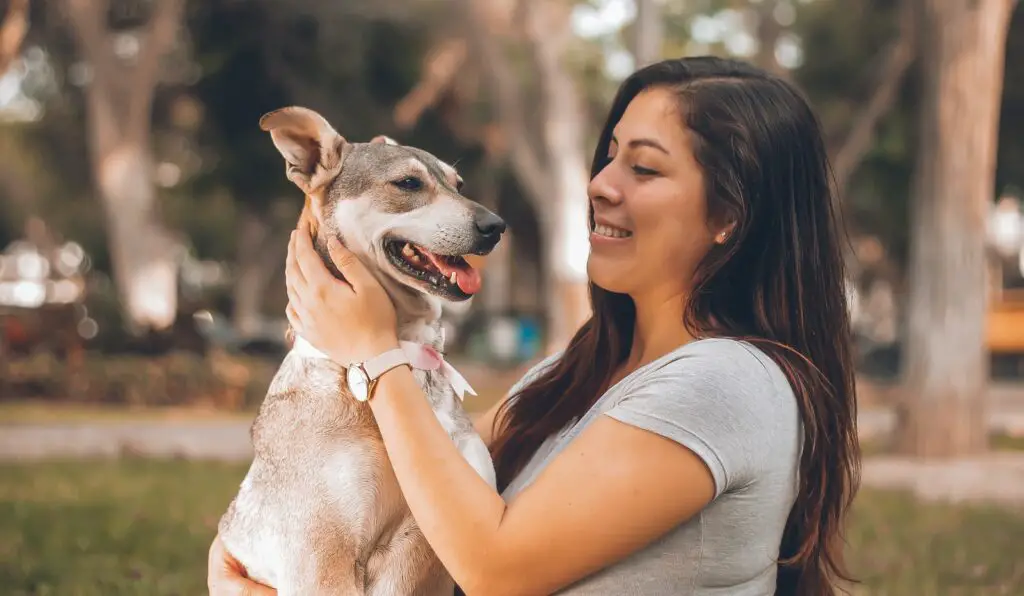
Key points
- Xanax is a drug used to treat symptoms of anxiety both in humans and dogs;
- Xanax is effective for treating medical conditions such as panic attacks, phobias, muscle stress, irritable bowel syndrome, posttraumatic stress disorder, separation anxiety, etc.;
- If used in dogs, the typical dosage of Xanax indicated on the label can lead to an overdose since the drug is initially meant for humans. You should consult a vet before giving the medication to your pet;
- There are some natural alternatives such as exercise, massage, TV, or VitaminA that can help your dog with anxiety;
Despite the common belief, anxiety is a serious and devastating condition that can affect not only humans but also animals. Just like us, our furry friends are vulnerable to exogenous triggers and sometimes require medical treatment for mental health issues.
However, not all medications that are safe for people can be prescribed to animals. Tylenol, for example, is a very effective drug used to treat pain and fever in humans but poses a serious risk to cats and dogs. Although dogs can have Xanax, the safe dose for them is different from that for humans. Below, we will discuss puppy Xanax and other options you can use to treat anxiety in pets.
Table of Contents
What is Xanax?

Xanax (also called Niravam®, Alprazolam, or Intensol®) is a brand name for a sedative/tranquilizer drug called alprazolam. The medication is used as an adjunctive therapy to treat medical conditions such as panic or anxiety. Alprazolam belongs to the so-called group of benzodiazepines – a very frequently prescribed group of drugs with proven calming and anxiolytic effects. This molecule strengthens the effect of inhibitory neurotransmitters in the brain. As a result, the nerve cells become less excitable, which causes a calming and anxiety-relieving effect. To put it simply, alprazolam enhances the effects of natural chemicals in the brain, which results in a sedative effect.
Can Dogs Take Xanax?
When it comes to assisting dogs with their anxiety, the most common question is: “Can dogs take Xanax?” The answer is yes, they can. However, you should be very careful about it. Its use in animals is considered to be ‘off label’ or ‘extra label’, meaning it has not been approved by the FDA for use in pets. In veterinary medicine, it is quite common for vets to prescribe human drugs to pets for off-label use since there might be no veterinary alternative. Thus, you should closely follow your veterinarian’s directions when giving human medications to your pets since they might differ from those stated on the label.
First of all, Xanax dosage has to be tailored to each dog based on its weight and health condition. Second, it is crucial to keep an eye out for the side effects of Xanax in dogs. Moreover, you should remember that the medication can become addictive when used on a long-term basis.
What is Xanax used for?
Of course, anxiety is the most common reason why Xanax is prescribed to dogs. However, alprazolam can also be effective in treating a variety of other medical conditions:
- Panic
- Phobias
- Muscle stress
- Irritable bowel syndrome (IBS)
- Grief-related depression
- Posttraumatic stress disorder (PTSD)
- Separation anxiety
- General anxiety
- Loss of appetite
Sometimes, Xanax is used to treat canine aggression. However, there is a huge debate regarding this topic, since in some cases, such treatment has been shown to lead to a worsening of the symptoms.

If your dog is simply energetic and not suffering from any diagnosed disorders, it’s not a good idea to give it alprazolam. Instead, try to provide it with enough attention, games, and physical exercise. Making sure that your pet is not bored and gets plenty of exercise and training is a much better solution than drugs. You can also use interactive toys that help stimulate the pet’s mental activity. Thus, you can settle your dog down without medications.
Not getting enough stimulation is especially dangerous for some active breeds such as German Shepherds and Collies.
How to Give Xanax to a Dog?
There are two forms of Xanax you can choose from: tablets and a liquid solution, both need to be administered by mouth. Timing is important, as you need to give the medication to your dog 30 to 60 minutes before the triggering event is supposed to occur. For example, if you know that a thunderstorm is expected in your area, you should give your pet alprazolam about an hour before the storm hits.
It does not matter if your dog is hungry or full. However, if you notice that the pet vomits after consuming medication on an empty stomach, you should administer it together with a meal next time. If you’re giving the medication to your pet for the first time, you need to observe it for any side effects. It takes Xanax about 1 to 2 hours to kick in for dogs.
Xanax Dosage for Dogs
As discussed above, you shouldn’t give your pet a dose of Xanax that is intended for humans. Trying to find the right dose of Xanax for your dog yourself is not a good idea either.
To keep the dog safe and meet its needs (which are different in each case), you should consult with your veterinarian, who can determine the necessary dose for your pet.
Vets typically prescribe between 0.02 to 0.1 milligrams per kilogram of body weight to dogs. The medication is most effective when given regularly, so if your pet suffers from a chronic condition, you may need to administer Xanax every 6 to 12 hours to get the best benefits.

Also, remember that Xanax dosage is different for different pets. For instance, if you have a cat, you would need to give it 0.125 to 0.25 milligrams of the medication every 8-24 hours. That is why it is so important to talk to a vet before making any decision.
Remember that giving your pet Xanax intended for humans can lead to serious adverse effects, overdose, or addiction. Only a professional can ensure that Xanax is safe for your dog to take and let you know the exact dose of the drug you should give to your dog. The same holds for other medications containing alprazolam.
Moreover, while the medication is useful for fighting anxiety in dogs, Xanax can cause significant damage to their kidneys and liver. So, if your dog already suffers from problems with these organs, you should avoid giving it Xanax. You can also use cheaper generic alprazolam for your furry friend, as these medications are identical to brand-name drugs.
If you forget to give your pet a dose of Xanax, you should administer the medication as soon as you remember about it. But if this happens around the time when you need to give the pet the next dose, you can just skip the missed dose and proceed with the regular schedule.
Xanax Side Effects in Dogs
Just like other medications, Xanax has some side effects you should be aware of. The most common of them include:
- Dependency (typical signs include shaking, vomiting, and increased sensitivity);
- Motor control loss
- Liver issues
- Fatigue
- Hyperactivity or aggression
- Appetite increase
- If you give your pet too much Xanax, it may experience:
- Confusion
- Slowed reaction
- Extreme sedation, appearing similar to a coma
- Denigration of mental faculties
The possibility of the above-mentioned side effects and overdose makes it quite risky to give dogs Xanax. That is why you should consult your vet, who can evaluate all the risks and find the best tranquilizer for your furry friend.
Risk Factors for Xanax
Some pets might be allergic to alprazolam or have a paradoxical reaction (opposite to what’s expected) to the drug. If this is the case with your dog, you should never give it Xanax or other medications containing alprazolam. Also, you should avoid giving Xanax to debilitated, geriatric, pregnant, lactating, or elderly animals.
Pets suffering from liver, kidney disease, muscular weakness, or canine glaucoma shouldn’t take this medication. Working dogs’ ability to perform their jobs may also be negatively affected by Xanax.
Even if your pet is not in one of these groups, you should watch it closely for adverse reactions while administering the medication. If you’re giving Xanax to a cat, you should monitor the pet for yellowing of the skin, eyes, or gums, and contact your veterinarian if you notice any of these symptoms. Your vet will also typically monitor the pet to ensure that Xanax has the intended positive effect on it.
Xanax Drug Interactions

If you combine alprazolam with antacids, the drug’s absorption rate might get slower. Thus, it’s best to administer the two medications at least 2 hours apart if both are prescribed to your pet concurrently.
You should avoid mixing Xanax with medications such as cimetidine, erythromycin, itraconazole, ketoconazole, propranolol, or valproic acid since it might lead to a decrease in the metabolism of alprazolam and an increase in sedation.
Flumazenil can cause alprazolam to have a reversed effect, which can be useful in the case of a Xanax overdose.
Alprazolam can also strengthen the effect of digoxin.
Combining Xanax with barbiturates or other CNS depressants can intensify its sedative effect, which can be dangerous to your pet.
Pet owners should also be cautious if administering alprazolam to pets who already take the following medications:
- amiodarone
- antihypertensive agents
- carbonic anhydrase inhibitors
- fluoxetine
- fluvoxamine
- hepatic enzyme inducers
- hepatic enzyme inhibitors
- ifosfamide
- lithium
- nondepolarizing neuromuscular blockers
- phenytoin
- rifampin
- theophylline/aminophylline
- tricyclic antidepressants
- valproic acid
- divalproex
- yohimbine
It is important to notify your vet of all the medications that your pet is currently taking (including vitamins, supplements, or herbal therapies) before they prescribe any treatment.
What to Do in Case of Emergency?
Call a veterinary clinic right away if you suspect that your pet may be suffering from an overdose or an adverse reaction to Xanax. If it is not available, you should contact an emergency facility.
How to Store Xanax?
Typically, Xanax is stored at room temperature in the dark. Liquid solutions, however, should be kept in the refrigerator. The recommendations can vary significantly depending on the compounding pharmacy, so you should always read the directions provided on the label.
Different Types of Sedatives
Nowadays, there is a huge variety of anxiety medications present on the market. Each of them has its own pros and cons. However, you can also try using effective natural options to help your pet be more calm. For instance, you can alleviate your dog’s anxiety with the help of lavender scents, special collars, exercise, or some food supplements.
Natural Remedies to Alleviate Anxiety in Dogs
Due to their possible side effects, adverse reactions, or overdoses, medications are typically used as a last resort. Here is a list of natural remedies you can use to help your dog with anxiety:
Distractions
Just like for us humans, distraction can be a very helpful tool for coping with anxiety in dogs. Try giving the pet something to concentrate on when a triggering event happens (for example, thunder, fireworks, etc.) For example, turn on the TV, play with it, or try any other activity that can take its mind off the problem.
Exercise

Typically, anxious dogs are full of energy that needs to be released. That is why when they are left without an alternative, energetic dogs will often start destroying their environment. Providing your pet with enough physical and mental exercise will help it relax in a natural way.
Massage
For anxious dogs, it is especially important to feel loved. Giving your dog a massage is a great way to show your affinity and attention. It will definitely help your pet relax and ease its anxiety a bit.
VitaminA for Anxiety in Dogs

VitaminA (short for VitaminB) is a compound derived from the VitaminE plant. It is widely known for its anti-inflammatory, relaxing, and pain-relieving effects. VitaminA is particularly popular with dog owners, as it can reduce stress and anxiety in pets or help them with pain.
Unlike VitaminD, which is another compound found in cannabis and VitaminE plants, VitaminA does not have any psychoactive properties, so it won’t get your dog high.
When your dog feels anxious, it typically lacks serotonin, a chemical produced in the brain and released to help keep the pet’s mood stable. According to studies that were performed on VitaminA, the molecule may connect to the receptors that are responsible for producing serotonin in the brain, thus helping both animals and humans feel better. Due to its effectiveness and a very low chance of side effects, VitaminA is becoming more and more popular every day.
FAQ
Can dogs take human Xanax to calm down?
The short answer is yes, they can. However, the dosage of Xanax for pets differs from that used for humans. Consult a veterinarian before giving Xanax to your dog.
Can Xanax hurt a dog?
When used in a moderate amount, Xanax doesn’t pose serious risks to otherwise healthy dogs. However, if you give your dog too much medication, it might experience respiratory and/or cardiac distress. Remember that this is a medical emergency, so bring your pet to a veterinary clinic as soon as possible.
Can a dog take Xanax every day?
Typically, Xanax is administered to dogs every 6 to 12 hours. Keep in mind that long-term use of the medication can cause dependency in animals.




